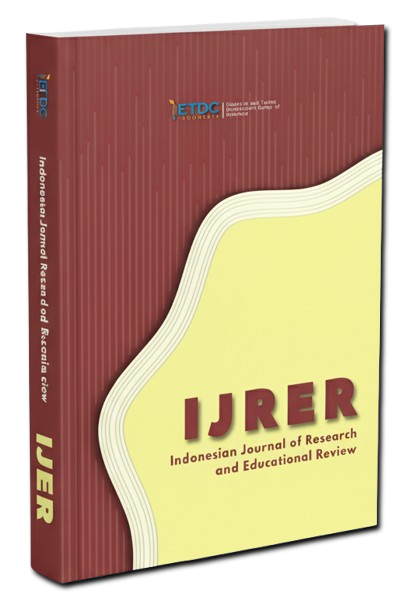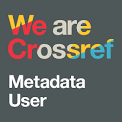Learning Design Education Religion Islam In School
DOI:
https://doi.org/10.51574/ijrer.v2i2.877Keywords:
Development, Learning Design, Religion, Islamic SchoolAbstract
Structure content learning without considering learning models or methods so that the information presented by the teacher is forgotten quickly. The object of the paper: This article examines the procedures for planning, defining, and creating an organizing strategy for subject-matter learning in the context of professional Islamic religious education. Temporary, as in the theory applied to the issue This design model theory learning is in reference to the Kemp, Dick, and Carey approach system as well as the Dageng model. All three address the formation of learning strategies, the development of process measurement learning, and analysis condition learning. Inductive reasoning, descriptive-analytical thinking, and characteristic libraries are all topics covered in this essay. The analysis of data from characteristic facts, facts specific to directions, and general information about design development in Islamic religious education learning form the basis of the debate. Review the report of outcomes. This demonstrates that: (1) Kemp's model may be used to construct Islamic religious education based on the four planning learning elements of participant students, objectives, methods, and evaluation. Dick and Carey's term "design models development" refers to the approach systems and design models development of Degeng based on the following influencing variables: learning form goals and characteristics field study, source learning and constraints, characteristics participant educate, purpose study and content learning, organizing strategy content learning, delivery strategy content learning, management strategy learning, development procedure measurement results learning. (2) Procedures for planning and implementing Islamic religious instruction in schools, such as standard competency analysis, content learning, participant characteristics, approach selection and determination, and learning evaluation standards.
References
Almazyad, R., & Alqarawy, M. (2020). The design of Dick and Carey model. In Society for Information Technology & Teacher Education International Conference (pp. 544-547). Association for the Advancement of Computing in Education (AACE).
An, Y. (2021). A History of Instructional Media, Instructional Design, and Theories. International Journal of Technology in Education, 4(1), 1-21.
Asmaroini, A. P. (2016). Pengembangan paket pembelajaran pendidikan kewarganegaraan dengan model Degeng untuk siswa kelas VIII di SMP Negeri 5 Sawoo Kabupaten Ponorogo. Jurnal Dimensi Pendidikan dan Pembelajaran, 3(2), 41-48. https://doi.org/10.24269/dpp.v3i2.84
Azra, A., Afrianty, D., & Hefner, R. W. (2007). Pesantren and madrasa: Muslim schools and national ideals in Indonesia. Schooling Islam: The culture and politics of modern Muslim education, 172-98.
Bajracharya, J. R. (2019). Instructional design and models: ASSURE and Kemp. Journal of Education and Research, 9(2), 1-9.
Bergunder, M. (2014). What is religion?: The unexplained subject matter of religious studies. Method & Theory in the Study of Religion, 26(3), 246-286.
Burggraff, A. (2015). Developing discipleship curriculum: Applying the systems approach model for designing instruction by Dick, Carey, and Carey to the construction of church discipleship courses. Christian Education Journal, 12(2), 397-414. https://doi.org/10.1177/073989131501200211
Chan, C. K., & Luk, L. Y. (2022). A four-dimensional framework for teacher assessment literacy in holistic competencies. Assessment & Evaluation in Higher Education, 47(5), 755-769.
Dick, W., Carey, L., & Carey, J. O. (2013). A model for the systematic design of instruction. Instructional Design: International Perspectives: Theory, Research, and Models, 1, 361-370.
Fathuddin, F., Nurdin, N., & Rustina, R. (2023). The Challenges of Teaching Islamic Education In the Millennial Generation Era. International Journal of Contemporary Islamic Education, 5(1), 1-14.
Hubby, R. S., Nurdin, D., & Suryana, A. (2022). Competency-Based Education at a Madrasah Aliyah in Sumedang: Eliciting the Organized Programs. AL-ISHLAH: Jurnal Pendidikan, 14(2), 2075-2086.
Imaduddin, I., Sodikin, S., & Abidin, Z. (2022). The Strategy of Islamic Religious Teachers in the Development of Akhlakul Karimah in Integrated Islamic Elementary School Students. Munaddhomah: Jurnal Manajemen Pendidikan Islam, 3(4), 425-432.
Kemp, C., Perfors, A., & Tenenbaum, J. B. (2007). Learning overhypotheses with hierarchical Bayesian models. Developmental science, 10(3), 307-321.
Kiran, D. R. (2019). Production planning and control: A comprehensive approach. Butterworth-heinemann.
Krajcik, J., McNeill, K. L., & Reiser, B. J. (2008). Learning‐goals‐driven design model: Developing curriculum materials that align with national standards and incorporate project‐based pedagogy. Science education, 92(1), 1-32. https://doi.org/10.1002/sce.20240
Mahfud, C. (2019). Evaluation of islamic education curriculum policy in Indonesia. Premiere Educandum: Jurnal Pendidikan Dasar Dan Pembelajaran, 9(1), 34-43.
Mansir, F., & Karim, A. (2020). Islamic education learning approaches in shaping students’ emotional intelligence in the digital age. Hayula: Indonesian Journal of Multidisciplinary Islamic Studies, 4(1), 67-86. https://doi.org/10.21009/004.01.04
Martin, F., Ritzhaupt, A., Kumar, S., & Budhrani, K. (2019). Award-winning faculty online teaching practices: Course design, assessment and evaluation, and facilitation. The Internet and Higher Education, 42, 34-43. https://doi.org/10.1016/j.iheduc.2019.04.001
Nasir, M. (2021). Curriculum development and accreditation standards in the traditional islamic schools in Indonesia. Journal of Curriculum Studies Research, 3(2), 37-56.
Ozdem-Yilmaz, Y., & Bilican, K. (2020). Discovery Learning—Jerome Bruner. Science education in theory and practice: An introductory guide to learning theory, 177-190. https://doi.org/10.1007/978-3-030-43620-9_13
Papaioannou, D., Sutton, A., & Booth, A. (2016). Systematic approaches to a successful literature review. Systematic approaches to a successful literature review, 1-336.
Rahayu, Y. S. (2018). Developing Learning Model P3E to Improve Students’ Critical Thinking Skills of Islamic Senior High School. In Journal of Physics: Conference Series (Vol. 947, No. 1, p. 012067). IOP Publishing.
Richards, J. C. (2013). Curriculum approaches in language teaching: Forward, central, and backward design. Relc Journal, 44(1), 5-33. https://doi.org/10.1177/0033688212473293
Snyder, H. (2019). Literature review as a research methodology: An overview and guidelines. Journal of business research, 104, 333-339. https://doi.org/10.3316/QRJ0902027
Spivak, G. C. (2012). Subaltern studies: Deconstructing historiography. In In other worlds (pp. 270-304). Routledge.
Taufik, M. (2020). Strategic role of Islamic religious education in strengthening character education in the era of industrial revolution 4.0. Jurnal Ilmiah Islam Futura, 20(1), 86-104. http://dx.doi.org/10.22373/jiif.v20i1.5797
Tolchah, M., & Mu'ammar, M. A. (2019). Islamic Education in the Globalization Era. Humanities & Social Sciences Reviews, 7(4), 1031-1037.
Yusmaliana, D., & Widodo, H. (2019). Reconstruction of Islamic education curriculum in the disruption era. International Journal of Islamic Studies and Humanities, 2(1), 50.
Downloads
Published
How to Cite
Issue
Section
License
Copyright (c) 2023 ETDC: Indonesian Journal of Research and Educational Review

This work is licensed under a Creative Commons Attribution-ShareAlike 4.0 International License.














1.png)













